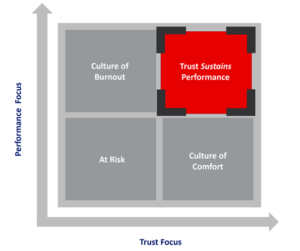Most often found at the end of D, E&I, or the middle of DIB (Diversity, Inclusion and Belonging), inclusion 4 Ways To Improve Your Company’s Inclusion, Diversity And Equity Strategy (forbes.com) is a well-worn word these days. While Diversity is quantitative in nature, fairly easy to measure, and lends itself to granular analytics, Inclusion is more qualitative and so while we all agree it is important, many have struggled with how it should be assessed. You have worked hard to create a diverse workforce but retaining them requires that you work equally as hard at providing an environment where everyone feels included.
Inclusion What is Inclusion? – Equity, Diversity, and Inclusion – LibGuides at Austin Community College (austincc.edu)is providing a work environment where all people feel respected, accepted, supported, and valued, allowing all employees to fully participate in decision-making processes and development opportunities within an organization, and is a challenge to measure.
Gartner www.gartner.com proposed the following holistic questions which accurately assess the organization’s feelings around inclusion. They can be asked individually in quick pulse surveys to certain teams or on an annual basis across the whole organization.
- Fair treatment: Employees at my organization who help the organization achieve its strategic objectives are rewarded and recognized fairly.
- Integrating differences: Employees at my organization respect and value each other’s opinions.
- Decision making: Members of my team fairly consider ideas and suggestions offered by other team members
- Psychological safety: What Is Psychological Safety at Work? | CCL I feel welcome to express my true feelings at work
- Trust: Communication we receive from the organization is honest and open.
- Belonging: People in my organization care about me
- Diversity: Managers at my organization are as diverse as the broader workforce.
While many of the above questions seem qualitative and anecdotal in nature there are clear actions, we can take to ensure successful outcomes.
- Conduct pay equity analyses at least annually to ensure all employees at paid equitably in relation to each other
- Create clear job descriptions and clear guidelines around who is eligible for and who ultimately receives promotions
- Train people leaders to listen more than they speak and to draw those who may be quieter into the conversation
- Enable small acts of kindness- Random Acts of Kindness | Welcome a handwritten note, flowers, a sincere thank you
- Create mentorship and reverse mentorship programs where a person can apply to be mentored or to be a mentor to a senior-level executive. Many white males cannot possibly understand what it is like to be a woman or a Black male or female in corporate America. Allow them the opportunity to begin to understand.
This is not a check the box exercise, it is a journey and likely a long one, but each step along the way will provide its own rewards!






